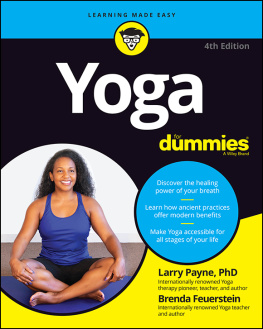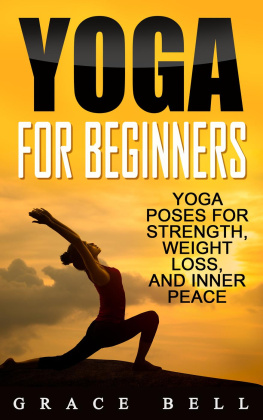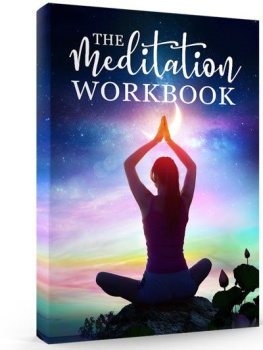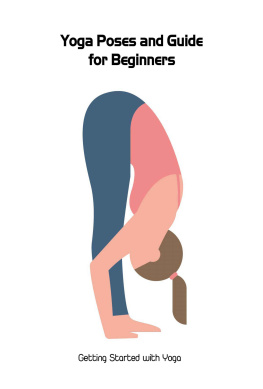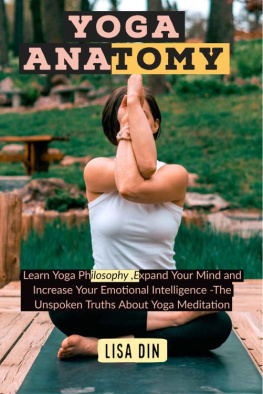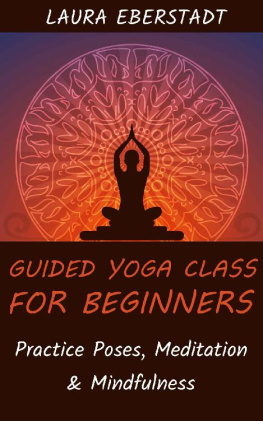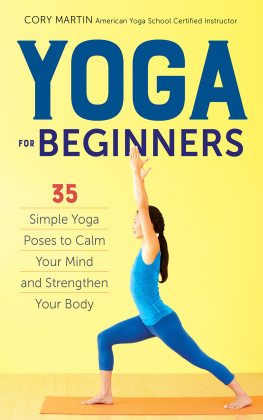Author of Yoga For Beginners: A Quick-Start Guide to Practicing Yoga for New Students
Copyright 2014 by Timothy Burgin. All rights reserved.
This book or any portion thereof may not be reproduced or used in any manner whatsoever without the express written permission of the publisher except for the use of brief quotations in a book review.
Preface
Before walking into my first yoga class, I was scared and nervous. All I knew about yoga was that you had to be flexible, and I was anything but. Although I was just 19, I could barely touch my knees when bending forward, so the thought of subjecting my body to 90 minutes of various pretzel-like contortions was extremely intimidating. I assumed yoga would be close to impossible for me.
However, my fears and anxieties quickly vanished at the start of my first class. The instructor was warm, friendly and compassionate. She encouraged us to only do what we could, without pushing, pulling, or straining. But most importantly was how she guided our awareness inwards to connect with our breath and the sensations in our bodies as we were practicing the postures.
I found practicing the yoga postures in that first class challenging, but not at all impossible. I quickly learned in my first yoga class that it doesnt matter how far you go into a pose; what matters is doing the pose to your level of ability and with as much awareness of your breathing and body sensations as possible. Not only did I feel a tremendous relief that I could actually do yoga with my inflexible body, but my inflexible body felt amazing after that first class. I was hooked. Over twenty years later, I am still enjoying the physical, mental, and emotional benefits of a regular yoga practice.
I feel so fortunate that I was able to attend class on a regular basis when I started practicing. As the founder and executive director of YogaBasics.com, I hear from many people across the country who want to learn yoga, but who dont have access to a teacher or are too intimidated to join a class. Even those whove tried yoga classes often find that the level of instruction may not be appropriate or adequately address their needs as there are few classes that are geared specifically for beginners. So many beginning students turn to books and websites and start their yoga practice at home.
Although my website, YogaBasics.com, has a lot of content geared specifically towards beginners, I have realized that it might be daunting for new students to try to devise a program on their own. And while there are several good beginner books, this book is the first of its kind that leads the beginning student through a series of lessons to slowly and confidently learn and grow through several weeks of practice.
As a certified Kripalu Yoga teacher, Ive been teaching a wide range of students for the last 14 years. Ive observed new students from many different populations, from the young college student to the elderly retired person, and have discovered their specific needs and requirements for beginning yoga. All of my experiences with teaching beginning students have helped form the content of this book, as well as my overriding philosophy of keeping instruction simple and basic for beginners.
This book is based on a Yoga for Beginners program that I developed, first as a one-day workshop, and later on as a 6 week series of classes. This not only created the lesson format that forms the core of this book, it also gave me real-world feedback as to how to tailor and refine these lessons to meet the needs of the beginning student. It also gives me the confidence to tell you that this program works. If you diligently practice these lessons over the next several weeks, you will have the skill, strength, ability and confidence to be established in a regular home practice as well as go to a public yoga class.
Introduction
What Is Yoga?
Yoga is a collection of physical and spiritual practices aimed at integrating mind, body, and spirit. The goal of yoga is to achieve a state of inner balance and ultimately, enlightenment (a state of oneness with the universe). There are many different paths of yoga, and what is normally thought of as yoga in the West is really hatha yoga, the physical or forceful path. In the East, different yogas are practiced that are more focused on devotion, meditation and selfless service. While all of these different paths emphasize different approaches and techniques, they ultimately lead to the same goal of unification and enlightenment.
Though yogas ultimate aim is lofty, its essence is practical and scientific. Yoga emphasizes direct experience and observable results through a practice of personal inquiry and exploration. While yoga teaches spiritual techniques, it is not religious. As you will discover throughout this book, the philosophy and practice of yoga speaks to universal truths which can be incorporated within any belief system.
History Of Yoga
The origin of yoga is obscure because of its reliance on oral transmission and secrecy. Early writings were transcribed on fragile palm leaves, which were easily damaged, destroyed, or lost. Most scholars believe yoga originated about 5,000 years ago, but some think that the practice could be up to 10,000 years old.
The practices were developed by the Indus-Sarasvati civilization in Northern India and started in the context of a guru-disciple (teacher-student) relationship. In the ancient days, yogis practiced asceticism and sought to diminish the vitality of the body in order to control desires, which they viewed as an obstacle to liberation. Eventually, some yoga masters began to see the body not as a hindrance to transformation, but as its very vehicle. They created a system of practices designed to balance and energize the body, preparing it for liberation. This philosophy, known as tantra yoga, led to further mind-body explorations, which were the precursor to hatha yoga, the body-centered exercises that are most commonly taught as yoga in the West.
In the 1920s and 30s, hatha yoga was strongly promoted in India through the work of Swami Sivananda, T. Krishnamacharya, and others. Sivananda founded the Divine Life Society on the banks of the holy Ganges River in 1936. A prolific author of over 200 books on yoga, he established nine ashrams and numerous yoga centers worldwide. Krishnamacharya opened the first hatha yoga school in Mysore in 1924. His three most well-known students: B.K.S. Iyengar, T.K.V. Desikachar and Pattabhi Jois, are the founders of Iyengar, Viniyoga, and Ashtanga styles of hatha yoga, all commonly practiced in the West today.
Since then, many more western and Indian teachers have become pioneers, popularizing hatha yoga and gaining millions of followers. Hatha yoga now has many different schools or styles, all emphasizing different aspects of the practice.
Hatha Yoga: The Physical Path
Hatha yoga (ha=sun tha=moon) attains the union of mind-body-spirit though a practice of asanas (yoga postures), pranayama (yoga breathing), mudra (body gestures) and shatkarma (internal cleansing). These body-centered practices are used to purify the body, cultivate prana, and activate kundalini, the subtle energies of the body. Modern hatha yoga does not emphasize many of these esoteric practices and focuses primarily on the physical yoga postures.


